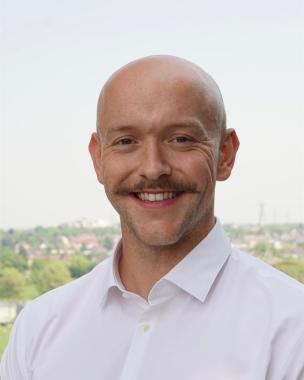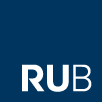Back to index

Back to index

M.Sc. Mathias Redondo Garcia
Lehrstuhl Werkstoffwissenschaft
Institut für Werkstoffe
Fakultät für Maschinenbau
Ruhr-Universität Bochum
Universitätsstr. 150
44780 Bochum
Gebäude ICFO, Ebene 04, Raum 307
Institut für Werkstoffe
Fakultät für Maschinenbau
Ruhr-Universität Bochum
Universitätsstr. 150
44780 Bochum
Gebäude ICFO, Ebene 04, Raum 307
Activities: Research Assistant
What are the parameters that affect the morphology of detrimental intermetallics that form during service at high temperatures?
As part of his PhD thesis, Mathias Redondo Garcia works on a project funded by the "German research foundation" (DFG) together with his supervisor Prof. Dr. Guillaume Laplanche. The aim of this project is to provide a better understanding of the different parameters (e.g., diffusivities, interfacial properties, elastic moduli) that affect the morphology of σ-phase precipitates in structural materials. The latter phase is one of the most frequently encountered intermetallic phases in engineering alloys, e.g., it has been reported to form in austenitic stainless steels and Ni-base superalloys when these materials are exposed to high temperatures during service. The σ-phase precipitation is known to be detrimental as it causes embrittlement, degrades creep resistance, fatigue properties, and corrosion resistance. Consequently, it is important to predict how the σ phase forms and how its precipitation and precipitate morphology affect material properties.
In this context, Mathias Redondo Garcia investigates the σ-phase precipitation kinetics in two model alloys with very different precipitate morphologies (i.e., globular and plate-like). Mathias heat treats these alloys between 600 and 1200 °C for times up to 3000 h. He then prepares metallographic specimens, he characterizes them using a scanning electron microscope, and he quantitatively analyzes the morphology of the σ-precipitates (e.g., mean size, aspect ratio, number density, area fraction) using different software. Mathias also performs tensile tests on well-defined microstructures to determine how the morphologies affect the tensile behavior and cause embrittlement. This project is carried out in collaboration with the group of Prof. Markus Stricker from the interdisciplinary centre for advanced materials simulation (ICAMS), where machine learning approaches are employed to automatically and quantitatively analyze the micrographs obtained by Mathias and to compare his experimental results with simulations of precipitation.
As part of his PhD thesis, Mathias Redondo Garcia works on a project funded by the "German research foundation" (DFG) together with his supervisor Prof. Dr. Guillaume Laplanche. The aim of this project is to provide a better understanding of the different parameters (e.g., diffusivities, interfacial properties, elastic moduli) that affect the morphology of σ-phase precipitates in structural materials. The latter phase is one of the most frequently encountered intermetallic phases in engineering alloys, e.g., it has been reported to form in austenitic stainless steels and Ni-base superalloys when these materials are exposed to high temperatures during service. The σ-phase precipitation is known to be detrimental as it causes embrittlement, degrades creep resistance, fatigue properties, and corrosion resistance. Consequently, it is important to predict how the σ phase forms and how its precipitation and precipitate morphology affect material properties.
In this context, Mathias Redondo Garcia investigates the σ-phase precipitation kinetics in two model alloys with very different precipitate morphologies (i.e., globular and plate-like). Mathias heat treats these alloys between 600 and 1200 °C for times up to 3000 h. He then prepares metallographic specimens, he characterizes them using a scanning electron microscope, and he quantitatively analyzes the morphology of the σ-precipitates (e.g., mean size, aspect ratio, number density, area fraction) using different software. Mathias also performs tensile tests on well-defined microstructures to determine how the morphologies affect the tensile behavior and cause embrittlement. This project is carried out in collaboration with the group of Prof. Markus Stricker from the interdisciplinary centre for advanced materials simulation (ICAMS), where machine learning approaches are employed to automatically and quantitatively analyze the micrographs obtained by Mathias and to compare his experimental results with simulations of precipitation.
Back to index




